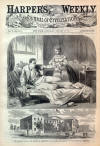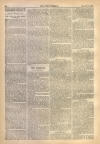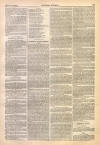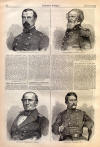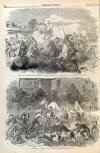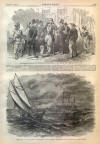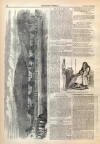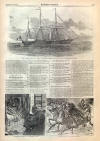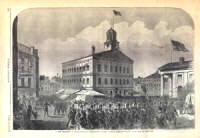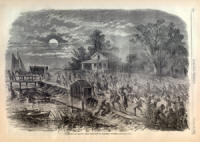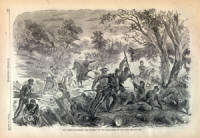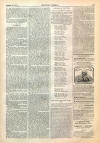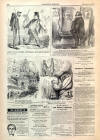General McDowell and Mansfield
|
|
This Site:
|
HARPER'S WEEKLY. [AUGUST 17, 1861. 516 GENERAL McDOWELL.—[PHOTOGRAPHED BY BRADY.]GENERAL MANSFIELD.-[PHOTOGRAPHED BY BRADY.]BRIG.-GEN. McDOWELL, U.S.A.GENERAL IRVIN McDOWELL, whose portrait will be found above, is a native of Ohio, from which State he was appointed to a cadetship in the United States Military Academy at West Point in 1834. He graduated in July, 1838, and was immediately promoted to the rank of Brevet Second Lieutenant. He was assistant instructor in tactics at West Point from September to November, 1841, and Adjutant to October, 1845 he was promoted to a First Lieutenancy in October, 1842 ; Aid-de-camp to General Wool from October, 1845, to May, 1847, and took an active part in the war with Mexico. He received the honorary rank of Brevet Captain for gallant conduct in the battle of Buena Vista, February 23, 1847 ; promoted to post of Assistant Adjutant-General, with rank of Captain, in May, 1847, and relinquished rank in line in February, 1851; Assistant Adjutant-General, with the rank of Major, March 31, 1856 ; Brevet Brigadier-General, May, 1861. He commanded the United States troops on the recent advance to Bull Run, and though unfortunate in that affair is not blamed by any one for his management of the attack. BRIG.-GEN. MANSFIELD, U.S.A.GENERAL J. K. F. MANSFIELD, whose portrait we give herewith, is a native of Connecticut, from which State he was appointed to a cadetship in the United States Military Academy at West Point in 1817. He graduated in July, 1822, and was immediately appointed Brevet Second Lieutenant in the Corps of Engineers. He was subsequently promoted to a First Lieutenancy in March, 1832 ; Captain, July, 1838 ; Chief Engineer of the army commanded by General Taylor in the Mexican war, 1846-'47. He was promoted to the honorary rank of Brevet-Major for gallant and distinguished services in defense of Fort Brown, on the Rio Grande, May 9, 1846, and was severely wounded in the battle of Monterey. He received the honorary rank of Brevet Lieutenant-Colonel for gallant services in several conflicts with the enemy in September, 1846, and Brevet Colonel for distinguished bravery in the battle of Buena Vista, February 23, 1847. He was appointed Inspector-General of the army, with the rank of Colonel, May 28, 1853, thereupon relinquishing his rank in the Engineer Corps. He held this responsible position until recently, when President Lincoln, appreciating the high scientific and military talent of this distinguished officer, promoted him to a full Brigadier-Generalship, and placed him in command of the troops at Washington. He is about fifty-five years of age, tall and graceful in form, with a snowy beard. FLAG-OFFICER STRINGHAM,
COMMANDING THE ATLANTIC BLOCKADING
COMMODORE SILAS H. STRINGHAM, whose portrait we publish below, is a native of the State of New York, and was born near Newburgh, Orange Co. He has been connected with our navy and in active service since the year 1809, when he entered as midshipman, at the age of eleven. His advancement has been by the regular course of promotion, his present commission dating September, 1841. The Department at Washington have always had the fullest confidence in his ability, as is shown by the many and important commands in which he has been placed. Since holding his present rank he has successively been Commandant of the Brooklyn Navy-yard, followed by a cruise to the Brazils, then Commandant at the Norfolk Navy-yard, then a cruise as Commodore of the Mediterranean squadron, from whence he returned in July, 1855 ; was soon ordered to the Charlestown Navy-yard as Commandant, holding that position some four years ; upon leaving there he was the recipient of various testimonials of esteem and regard from those under his command. Upon the incoming of the present Administration he was early ordered to Washington on special duty, and upon deciding to blockade all the Southern ports, he was ordered to his present command, reaching from Key West on the south to Cape Charles, at the mouth of Chesapeake Bay, on the north, with the Minnesota, a forty-gun steamer, as the flag-ship, and some twenty-five vessels in all, manned by 3500 sailors and marines. The fleet is the most important ever put in commission by the Department (although not yet as large as it should be to be entirely effective). In person the Commodore is of medium height, and a compact, athletic frame, of manly bearing and frank demeanor; in manner, a pleasing mixture of gentleman-like refinement and sailor-like frankness, with a character of high moral tone, " without fear and without reproach." No officer is more beloved and respected by those who serve under him than Commodore Stringham, while we of the Empire State know our honor, and that of the flag of our Union, is in safe keeping while under his care. COL. FRANCIS P. BLAIR, JUN.WE publish herewith the portrait of COLONEL FRANCIS PRESTON BLAIR, JUN., of St. Louis, Missouri, Member of Congress, and Chairman of the House Committee on Military Affairs. Mr. Blair comes of one of the most distinguished families in the country. His father, Francis P. Blair, Sen., was the editor of the Globe under General Jackson, and the intimate personal friend and adviser of that President, and of his successor, Van Buren. He is still alive. Three of the sons of Mr. Blair, Sen., have distinguished themselves in politics. One has been Governor of Michigan ; another, Montgomery, is Postmaster-General; a third, perhaps the most distinguished of all, is the one whose portrait we now publish. Born at Lexington, Kentucky, in 1821, Mr. Blair chose the law for his profession and St. Louis for his residence. On the outbreak of the Mexican war he served as a private under Kearney for some months. Be was elected for two consecutive terms to the Missouri Legislature, and in 1856 and 1860 to Congress. Mr. Blair is known as the leader of the emancipationists of St. Louis, and is a man of extraordinary courage, energy, and perseverance. FLAG-OFFICER STRINGHAM.-[FROM A PHOTOGRAPH.]COLONEL BLAIR.-[PHOTOGRAPHED BY BRADY.]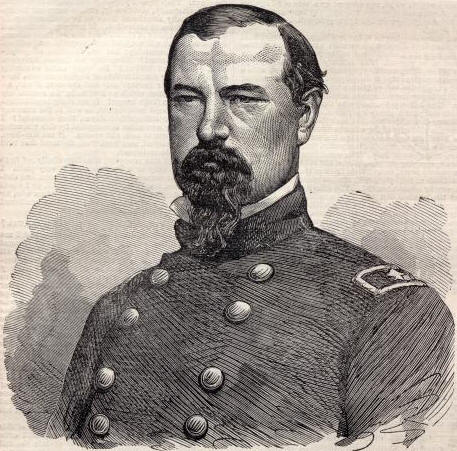 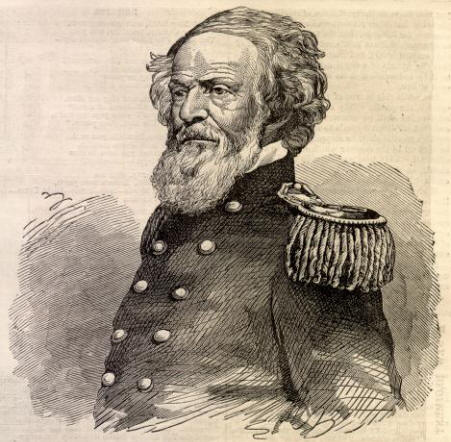 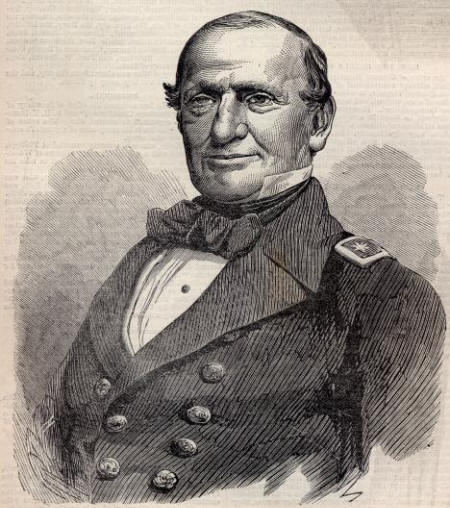 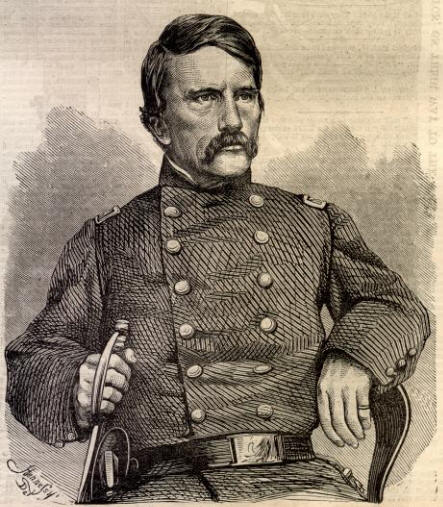 |
||||||||||||||||||||||||
|
|
||
|
|
Site Copyright 2003-2018 Son of the South. For Questions or comments about this collection, contact: paul@sonofthesouth.net |
|
|
Are you Scared and Confused? Read My Snake Story, a story of hope and encouragement, to help you face your fears. |
||
